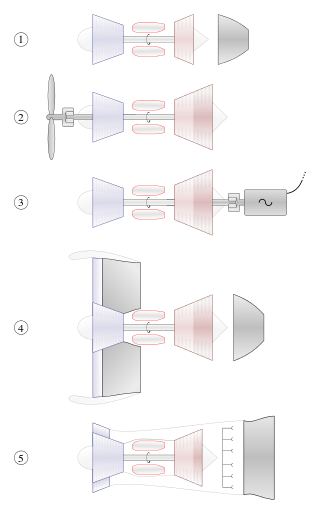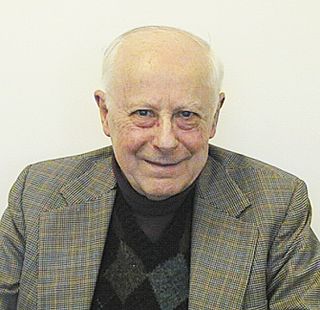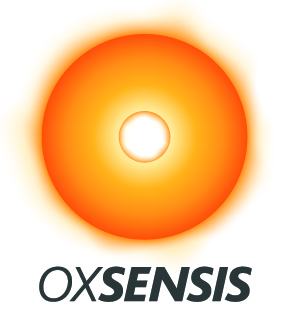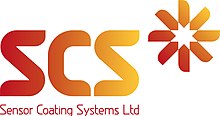
A thermometer is a device that measures temperature or a temperature gradient. A thermometer has two important elements: (1) a temperature sensor in which some change occurs with a change in temperature; and (2) some means of converting this change into a numerical value. Thermometers are widely used in technology and industry to monitor processes, in meteorology, in medicine, and in scientific research.

A gas turbine, also called a combustion turbine, is a type of continuous flow internal combustion engine. The main parts common to all gas turbine engines form the power-producing part and are, in the direction of flow:
In engineering, a heat shield is a component designed to protect an object or a human operator from being burnt or overheated by dissipating, reflecting, or absorbing heat. The term is most often used in reference to exhaust heat management and to systems for dissipating frictional heat.

A thermographic camera is a device that creates an image using infrared (IR) radiation, similar to a normal camera that forms an image using visible light. Instead of the 400–700 nanometre (nm) range of the visible light camera, infrared cameras are sensitive to wavelengths from about 1,000 nm to about 14,000 nm (14 μm). The practice of capturing and analyzing the data they provide is called thermography.

A superalloy, or high-performance alloy, is an alloy with the ability to operate at a high fraction of its melting point. Several key characteristics of a superalloy are excellent mechanical strength, resistance to thermal creep deformation, good surface stability, and resistance to corrosion or oxidation.
Low emissivity refers to a surface condition that emits low levels of radiant thermal (heat) energy. All materials absorb, reflect, and emit radiant energy according to Planck's law but here, the primary concern is a special wavelength interval of radiant energy, namely thermal radiation of materials. In common use, especially building applications, the temperature range of approximately -40 to +80 degrees Celsius is the focus, but in aerospace and industrial process engineering, much broader ranges are of practical concern.
Phosphor thermometry is an optical method for surface temperature measurement. The method exploits luminescence emitted by phosphor material. Phosphors are fine white or pastel-colored inorganic powders which may be stimulated by any of a variety of means to luminesce, i.e. emit light. Certain characteristics of the emitted light change with temperature, including brightness, color, and afterglow duration. The latter is most commonly used for temperature measurement.

The PACE Award is an annual award from Automotive News. The focus of the award is an innovation (i) developed primarily by a supplier, (ii) that is new to the automotive industry, (iii) that is in use, and (iv) that "changes the rules of the game." Awards have been given for products, materials, processes, capital equipment, software and services. A panel of independent judges from industry, finance, research, and academia choose finalists from the initial applicants, make site visits to evaluate the innovation, and then gather to select winners, independent of the sponsors. Winners to date include suppliers from Japan, Korea, China, the US, Canada, Brazil, Germany, France, Italy, Poland and other European countries. Among the most awarded companies over the years are BorgWarner, Delphi Automotive, Federal-Mogul, Valeo and PPG Industries as well as Robert Bosch GmbH, Gentex Corporation, and Siemens.
Nanotechnology is impacting the field of consumer goods, several products that incorporate nanomaterials are already in a variety of items; many of which people do not even realize contain nanoparticles, products with novel functions ranging from easy-to-clean to scratch-resistant. Examples of that car bumpers are made lighter, clothing is more stain repellant, sunscreen is more radiation resistant, synthetic bones are stronger, cell phone screens are lighter weight, glass packaging for drinks leads to a longer shelf-life, and balls for various sports are made more durable. Using nanotech, in the mid-term modern textiles will become "smart", through embedded "wearable electronics", such novel products have also a promising potential especially in the field of cosmetics, and has numerous potential applications in heavy industry. Nanotechnology is predicted to be a main driver of technology and business in this century and holds the promise of higher performance materials, intelligent systems and new production methods with significant impact for all aspects of society.

William C. Pfefferle was an American scientist and inventor.

Abdus Suttar Khan was a Bangladeshi scientist. He researched on aerospace for four decades with NASA, United Technology, and Alstom, a French power generation company. Khan invented more than forty different alloys for commercial application in space shuttles, jet engines, train engines and industrial gas turbines.
Infrared vision is the capability of biological or artificial systems to detect infrared radiation. The terms thermal vision and thermal imaging, are also commonly used in this context since infrared emissions from a body are directly related to their temperature: hotter objects emit more energy in the infrared spectrum than colder ones.

Oxsensis Ltd. is a British-based engineering business specialising in energy and aerospace equipment.
In microscopy, scanning joule expansion microscopy (SJEM) is a form of scanning probe microscopy heavily based on atomic force microscopy (AFM) that maps the temperature distribution along a surface. Resolutions down to 10 nm have been achieved and 1 nm resolution is theoretically possible. Thermal measurements at the nanometer scale are of both academic and industrial interest, particularly in regards to nanomaterials and modern integrated circuits.
The Queen's Award for Enterprise: Innovation (Technology) (1988) was awarded on 21 April 1988, by Queen Elizabeth II.
A thermal history coating (THC) is a robust coating containing various non-toxic chemical compounds whose crystal structures irreversibly change at high temperatures. This allows for temperature measurements and thermal analysis to be performed on intricate and inaccessible components, which operate in harsh environments. Like thermal barrier coatings, THCs provide protection from intense heat to the surfaces on which they are applied. The temperature range that THCs provide accurate temperature measurements in is 900 °C to 1400 °C with an accuracy of ±10 °C.
Space Engine Systems Inc. (SES) is a Canadian aerospace company and is located in Edmonton, Alberta, Canada. The main focus of the company is the development of a light multi-fuel propulsion system to power a reusable single-stage-to-orbit (SSTO) and hypersonic cruise vehicle. Pumps, compressors, gear boxes, and other related technologies being developed are integrated into SES's major R&D projects. SES has collaborated with the University of Calgary to study and develop technologies in key technical areas of nanotechnology and high-speed aerodynamics.

Leroy Stevenson (Skipp) Fletcher is an American mechanical and aerospace engineer, and college dean, who served as the 104th president of the American Society of Mechanical Engineers in 1985–86, and was recipient of the 2002 ASME Medal.

Ashwani K. Gupta is a British-American engineer and educator with research focus on combustion, fuels, fuel reforming, advanced diagnostics, High Temperature Air Combustion, and high-intensity distributed combustion, green combustion turbine, micro-combustion, and air pollution. He is an Distinguished University Professor at the University of Maryland. Gupta is also Professor of Mechanical Engineering at the University of Maryland and Director of Combustion Laboratory. He is also an Affiliate Professor at Institute of Physical Science and Technology, University of Maryland which is part of the University of Maryland College of Computer, Mathematical and Natural Sciences.

Kevin J. Hemker is the Alonzo G. Decker Chair and Professor of Mechanical Engineering at Johns Hopkins University and holds joint appointments in the Departments of Materials Science & Engineering and Earth & Planetary Sciences. He earned a BS in metallurgy from the University of Cincinnati, MS and PhD degrees in materials science and engineering from Stanford University, and completed a postdoctoral fellowship in physics at the Ecole Polytechnique Federale de Lausanne. His doctoral advisor at Stanford was Prof. William Nix. He joined the faculty at Johns Hopkins University in 1993, was an NSF National Young Investigator (1994), an invited Professor at the EPFL (1995) and the University of Paris XIII (2001), and received the ASM Materials Science Research Silver Medal in 2001. He served as Chair of the Department of Mechanical Engineering (2007–2013) and editor of Scripta Materialia (2004–2011). Hemker was a member and Vice-Chair of the DARPA Defense Science Research Council (2010–2014), a member of the SRI Technology Council (2017–2019) and was the 2018 President of The Minerals, Metals, Materials Society (TMS). He is currently a member of the HRL Technical Advisory Group and the NCMS AMMP Advisory Council. Hemker has been named Fellow of AAAS, ASME, ASM International and TMS











